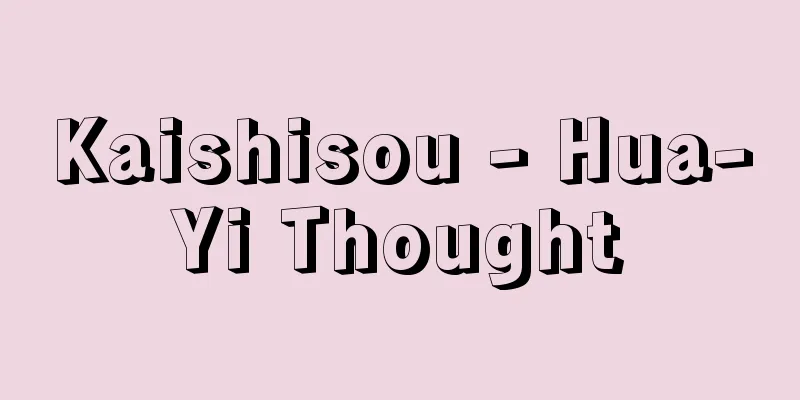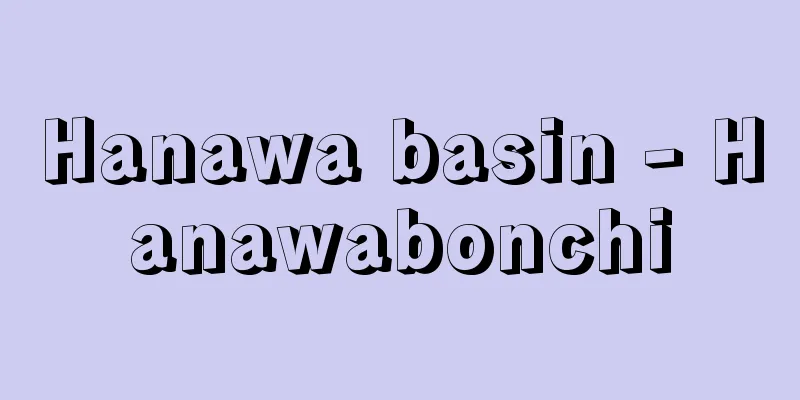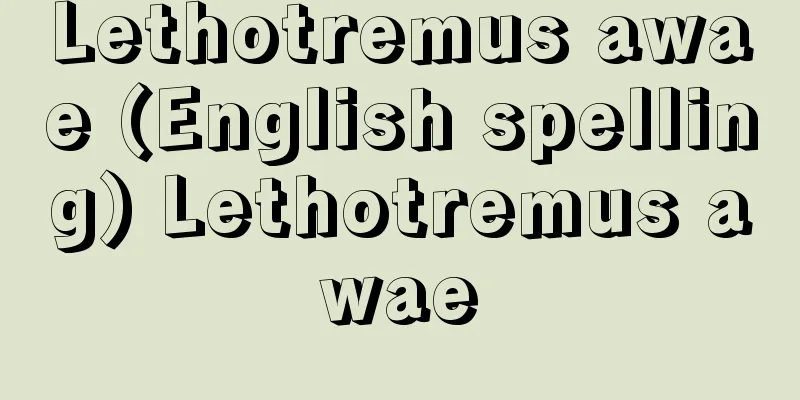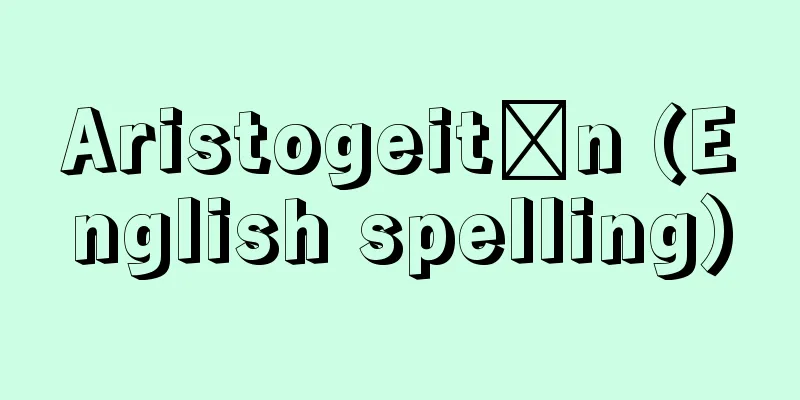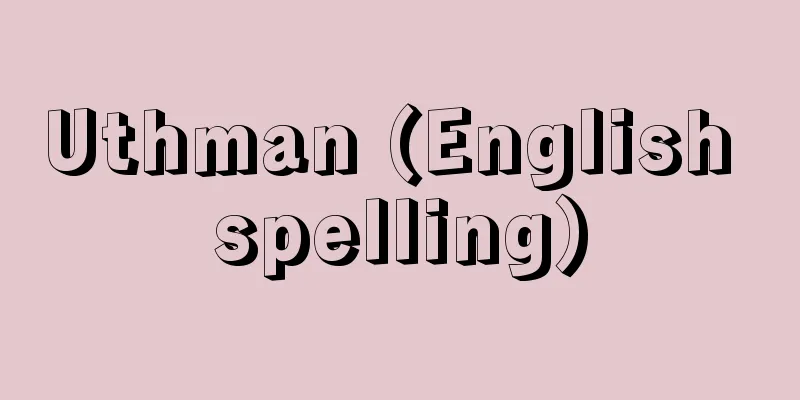Koto music - Soukyoku

|
The name of a genre of Japanese music that uses the zither-like koto as its main instrument. The koto was introduced from China during the Nara period, and began to be played in gagaku music (traditional Japanese court music). This is called gakuso. Later, during the Muromachi period, under the influence of gagaku and the music of the Chinese seven-stringed koto, Kenjun (?-1636) established Tsukushi-ryu koto music at Zendo-ji Temple in Kurume. These eventually led to early modern koto music. The koto used in these early modern koto music are generally called zokuso (traditional Japanese koto) as opposed to gakuso (traditional Japanese koto). [Kiyoshi Inobe] The History of Koto MusicEarly modern periodIts history begins with Yatsuhashi Kengyo, who is said to have studied the Chikushi school of koto music. He invented the tuning method for the Miyakobushi scale in Hira tuning, marking the first step towards modern music. He then composed koto group songs and danmono. Eventually, among blind musicians who followed the Yatsuhashi tradition, the Yatsuhashi school, Tsuguyama school, and Ikuta school were established in the late 17th century, and the Fujiike school in the 18th century. The Ikuta school in the broad sense in particular spread to Osaka, Kyoto, Edo, Kyushu, and Nagoya, and developed into the largest school. The founder of the school, Ikuta Kengyo, is said to have created the Kumoi tuning and Nakazora tuning, used a square claw, and was particular about playing in ensemble with the shamisen. Since then, it has become popular to add koto notes to jiuta songs and perform them in an ensemble, and after Ichiura Kengyo, the Kaede style koto music, in which the koto is played with a different melody, has become mainstream. Among them, Yaezaki Kengyo's Kyoto style tegotomono koto notes include many masterpieces, and these jiuta seed koto songs have remained popular to this day. Meanwhile, the Ikuta school had made inroads in Edo for a time, but with the emergence of Yamada Kengyo, under the influence of Katobushi and other styles, Yamada-ryu koto music was born, with a strong narrative character, with the koto as the main instrument and the shamisen as a secondary instrument. Thus, the Yamada school came to wield overwhelming influence in Edo, and created its own world in opposition to the Ikuta school system in Kyoto and Osaka. Eventually, at the end of the Edo period, tegotomono also reached a deadlock, and koto music influenced by the restorationist ideas of the period began to be composed. Under the general trend of placing more emphasis on the koto than the shamisen, Mitsuzaki Kengyo of Kyoto revived danmono and koto group songs called Tenpo-gumi, and Yoshizawa Kengyo of Nagoya composed koto group songs in the Kokin-chyo style, and the Kokin-gumi series based on the Kokin Wakashu. However, on the other hand, towards the Meiji period, artists such as Ikuyama Kengyo and Matsusaka Harue were also composing Kyoto-style tegotomono using traditional techniques. [Kiyoshi Inobe] After the Meiji PeriodWhile most traditional music was perfected between the end of the Edo period and the Meiji period, the development of koto performance techniques and styles continued even after the Meiji period. Based on new attempts since the end of the Edo period and the influence of Western music, Meiji Shinkyoku emerged, centered in Osaka. This was due to the efforts of Kikutaka Kengyo, Kikuzuka Kengyo, and Tateyama Noboru. On the other hand, in the early 20th century, Suzuki Koson established the Kyogoku school in Kyoto. Furthermore, the influence of Western music became even stronger with the new Japanese music of Miyagi Michio and others, and the venue for performances expanded from homes and tatami rooms to large venues such as halls, but at the same time, the richness of Japanese sensibility was maintained. Shin Hogaku then led to modern Hogaku after the Second World War, showing a movement to adapt to the new era and trends in music. After the Meiji period, in order to improve the bass range of the traditional 13-string koto, Michio Miyagi developed 17-string and 80-string kotos, Shuretsu Miyashita developed 30-string kotos, and Keiko Nosaka developed 20-string kotos, and each of them has created their own unique world, except for the 80-string koto, which is no longer in use. Also, in an effort to achieve a more modern style of performance, the koto began to be placed on a koto-sounding stand with a soundboard attached, and played while sitting. [Kiyoshi Inobe] Schools of Early Modern Koto MusicBroadly speaking, there are two major schools, the Ikuta school and the Yamada school. The Ikuta school is based in Osaka and Kyoto, with roots in Chugoku, Kyushu, Nagoya, and other areas, and has also spread from Osaka and Kyushu to Tokyo. This school is characterized by using square-shaped tsume instruments, and in jiuta-type koto music, the shamisen is the main instrument and the koto is a secondary instrument in ensembles. However, in addition to the narrow Ikuta school, there are also the Shin-Ikuta school, Tsugiyama school, and Shin-Yatsuhashi school, and there are also the Miyagi-kai, Seiha, and Kyogoku schools that have derived from these. In addition, although they are now extinct, the Sumiyama school, Fujiike school, and Yasumura school seem to have existed in the past. Apart from these, there were distinctions such as the Kikusuji, Tomi-suji, Naka-suji, Tate-suji, and Tama-suji in Osaka, and the Kami-ha, Shimo-ha, and Fushimi-ha in Kyoto. On the other hand, the Yamada school has become a major force in Tokyo. It is played with round-headed plectrum, and in jiuta-type koto music, the koto takes the lead rather than the shamisen in the ensemble. It is also characterized by its use of Joruri-style music and a thin-necked shamisen. There are several schools, including Yamato, Yamaki, Yamase, and Nakanoshima, and there are over ten heads of these schools. In addition to the Ikuta and Yamada schools, there is also the Yatsuhashi school of Matsushiro in Nagano Prefecture, the Tsugaru Ikuta school of Aomori Prefecture, and Okinawan koto music, each of which is performed with its own characteristics and traditions. The first person to be designated as a holder of the Important Intangible Cultural Property for Koto music was the Yamada school's Koshi no Eisho (1887-1965), followed by Yonekawa Fumiko (1894-1995), Miyagi Kiyoko (1905-91), and Yonekawa Toshiko (1913-2005) from the Ikuta school, and Nakanoshima Kin'ichi (1904-84) and Uehara Masaki II (1903-96) from the Yamada school. [Kiyoshi Inobe] Types of Early Modern Koto Music(1) Koto Kumiuta This started with the 13 groups of Yatsuhashi Kengyo. Each song has 128 beats, and is made up of a combination of multiple songs, such as six songs. The performance is characterized by the frequent use of kakezume (hanging nails). In the tradition, there are three divisions: front, back, middle, and inner. (2) Danmono (tunes) This is also an instrumental piece that originated with Yatsuhashi Kengyo, and in principle does not include vocals. Each dan has 104 beats as a standard, and is composed of several sections. (3) Jiuta seed koto music: A piece performed by adding the koto to a jiuta song. The koto may be used in a song piece, but in that case it is only subordinate. However, in tegotomono, the koto plays an equal role as a substitute for the shamisen. It is also common to add the kokyu (Chinese fiddle) or shakuhachi (Japanese bamboo flute) to perform sankyoku ensemble. (4) Joruri-style koto music of the Yamada school The Yamada school, which had active exchanges with the Kawato-bushi, Itchu-bushi, and Tomimoto-bushi schools, has composed many Joruri-style koto pieces, including those by its founder, Yamada Kengyo. Each piece has its own unique characteristics, including the vocals, koto and shamisen melodies, instrument arrangements, shouts, and performance techniques. (5) Restorational Innovative Pieces from the End of the Tokugawa Period The Tenpo-gumi and Five-dan Kinuta pieces by Mitsuzaki Kengyo, and the Kokin-gumi pieces by Yoshizawa Kengyo, sought to innovate koto music through the restorationist movement, such as reviving kumuta (group songs) and danmono (pieces of music that overlap in a single movement), and creating a scale based on the Kokin-cho style, which added gagaku-style rhythm to the Miyako-bushi style. The above classifications are based on the style and form of the music, but there are also classifications based on the theme, content, melody, etc., such as lion music, kinuta music, congratulatory music, and komachi music. However, it is difficult to classify all koto music in this way. [Kiyoshi Inobe] "An Introduction to the History of Koto Music" by Yuko Chiba (1999, Ongaku No Tomosha) [References] | | School| | | | | | | | | | | | | | | |Source: Shogakukan Encyclopedia Nipponica About Encyclopedia Nipponica Information | Legend |
|
チター族の箏(そう)(こと)を主要楽器とする日本音楽の種目名。箏は奈良時代に中国から伝来し、雅楽の管絃(かんげん)曲でも演奏するようになった。これを楽箏(がくそう)とよんでいる。その後、室町時代には雅楽と中国の七絃琴の音楽の影響下に、久留米(くるめ)の善導寺において、賢順(けんじゅん)(?―1636)が筑紫(つくし)流箏曲を確立した。やがてこれらは近世箏曲へとつながっていった。なお、これらの近世箏曲に使われる箏は、一般に楽箏に対し俗箏とよばれる。 [井野辺潔] 箏曲の歴史近世筑紫流箏曲を学んだともいう八橋検校(やつはしけんぎょう)からその歴史が始まる。彼は都節(みやこぶし)音階の平(ひら)調子の調弦法を案出し、近世音楽としての第一歩を踏み出した。そして箏組歌(ことくみうた)や段物(だんもの)を作曲した。やがて八橋の流れをくむ盲人音楽家の間で17世紀後半には八橋流、継山(つぐやま)流、生田(いくた)流が、18世紀に藤池(ふじいけ)流などが成立した。とくに広義の生田流は大坂、京都をはじめ江戸、九州、名古屋にも広まり、最大の流派に発展する。流祖生田検校は雲井調子(くもいじょうし)、中空調子(なかぞらじょうし)をつくり、角爪(かくづめ)を使用、三絃との合奏に意を用いたという。それ以来、地歌曲に箏の手付けをして合奏することが盛んとなり、さらに市浦(いちうら)検校以後、別旋律で箏を演奏する替手(かえで)式箏曲が主流を占めるようになっていった。なかでも八重崎(やえざき)検校の京流手事物(てごともの)の箏手付けに名曲が多く、現在までこうした地歌種箏曲が人気曲となっている。 一方、江戸では一時期生田流が進出していたが、山田検校が現れて、河東節(かとうぶし)などの影響下に、箏を主とし、三絃を従とする語物的性格の強い山田流箏曲が誕生した。かくして、江戸では山田流が圧倒的勢力を振るうこととなり、京坂の生田流系統に対抗し、独自の世界をつくりだした。やがて幕末期になると、手事物にも行き詰まりが生じ、また、この期の復古主義思想の影響を受けた箏曲がつくられるようになった。三絃よりも箏に重点を置くという総体的傾向のもとに、京都の光崎(みつざき)検校は段物や天保組(てんぽうぐみ)とよばれる箏組歌を復活させ、名古屋の吉沢(よしざわ)検校も古今(こきん)調子による箏組歌、『古今和歌集』に取材した古今組シリーズを作曲した。もっとも、その一方では明治期にかけて、幾山検校や松阪春栄(はるえ)らによる伝統的手法による京流手事物の作曲も行われていた。 [井野辺潔] 明治以後大多数の伝統音楽が幕末から明治にかけて完成をみたのに対し、箏の演奏技法の開拓と様式の展開は明治以後も継続され、幕末以来の新しい試みや西洋音楽からの影響のもとに、大阪を中心とする明治新曲が出現した。菊高検校、菊塚検校、楯山登(たてやまのぼる)らの活躍によるものである。その一方では、20世紀初頭、京都で鈴木鼓村(こそん)が京極流を樹立している。さらに宮城道雄らの新日本音楽に至って、西洋音楽からの影響はいっそう強くなり、演奏の場を家庭内や座敷からホールなど大会場へと進出させたが、同時に日本的感性の豊かさを維持した。そして新邦楽から第二次世界大戦後の現代邦楽へとつながってゆき、新しい時代と音楽の流れに適応する動きをみせている。 なお、明治以後は、従来の十三絃箏以外に低音域の充実を図って、宮城道雄が十七絃や八十絃、宮下秀洌(みやしたしゅうれつ)が三十絃、野坂恵子が二十絃の箏を開発、使われなくなった八十絃を除いて、それぞれが独自の世界をつくりだしている。また近代的な演奏を目ざして、反響板を取り付けた箏響台の上に箏をのせ、腰掛け奏をするようにもなった。 [井野辺潔] 近世箏曲の流派大別すると生田流、山田流の二大系統になる。生田流の系統は大阪、京都を中心に、中国、九州、名古屋などに根を下し、さらに大阪や九州から東京へも進出している。角爪を使用し、地歌種の箏曲においては三絃を主とし箏を従として合奏を行うのがこの系統の特色となっている。もっとも、一口に生田流といっても、狭義の生田流のほか、新生田流、継山流、新八橋流などがあるし、さらにそこから派生した宮城会、正派(せいは)、京極流もある。また現在は廃絶したが、隅(住)山(すみやま)流、藤池流、安村流などが過去に存在したようである。これとは別に、大阪では菊筋、富筋、中筋、楯(たて)筋、玉(たま)筋などの、京都では上派、下派、伏見(ふしみ)派などの区別があった。 一方、山田流は東京で一大勢力を形成している。丸爪で弾き、地歌種の箏曲では三絃より箏が主体となって合奏する。浄瑠璃(じょうるり)風の曲や、細棹(ほそざお)の三絃を用いる点にも特色がある。山登(やまと)、山木(やまき)、山勢(やませ)、中能島(なかのしま)などの数系統があり、十指にのぼる家元がいる。なお、生田・山田両流のほかに、長野県松代(まつしろ)の八橋流、青森県の津軽郁田(いくた)流、沖縄箏曲があり、それぞれ特色と伝統をもって行われている。 なお箏曲の重要無形文化財保持者には、山田流の初世越野栄松(こしのえいしょう)(1887―1965)を最初に、生田流では米川文子(よねかわふみこ)(1894―1995)、宮城喜代子(みやぎきよこ)(1905―91)、米川敏子(1913―2005)、山田流では中能島欣一(きんいち)(1904―84)、2世上原真佐喜(うえはらまさき)(1903―96)らが指定された。 [井野辺潔] 近世箏曲の曲種(1)箏組歌 八橋検校の十三組に始まる。128拍を一つの歌として、六歌など複数歌の組合せよりなる。演奏はカケヅメ(かけ爪)の多用を特色とする。伝習上、表・裏・中・奥の別がある。 (2)段物(調物(しらべもの)) やはり八橋検校に始まる器楽曲で、原則的には歌を伴わない。一段は104拍を基準とし、数段で構成される。 (3)地歌種箏曲 地歌曲に箏を加えて演奏する曲。歌物の曲に箏を入れる場合もあるが、そのときの箏は従属的でしかない。しかし手事物では、替手式として三絃と対等に活躍する。また、胡弓(こきゅう)や尺八を加えて三曲合奏することも多い。 (4)山田流の浄瑠璃風箏曲 河東節、一中(いっちゅう)節、富本節と交流が盛んだった山田流では、流祖山田検校の作品をはじめとして、浄瑠璃様式の箏曲が数多くつくられている。歌や箏・三絃の旋律、楽器編成、掛け声、演奏法など独自の特色をもっている。 (5)幕末期の復古的革新曲 光崎検校の天保組や『五段砧(ぎぬた)』、吉沢検校の古今組などで、組歌や段物を復活したり、都節に雅楽風の律を加味した古今調子の音階を編み出すといった復古運動を通して、箏曲の革新を図ったもの。 以上は曲の様式、形式による分類であるが、ほかに曲の主題、内容、旋律などの面から、獅子(しし)物、砧(きぬた)物、御祝儀物、小町物などといった曲種の分類も行われている。しかし、箏曲全部をこれで分けるのは困難である。 [井野辺潔] 『千葉優子著『箏曲の歴史入門』(1999・音楽之友社)』 [参照項目] | | | | | | | | | | | | | | | | | | | |出典 小学館 日本大百科全書(ニッポニカ)日本大百科全書(ニッポニカ)について 情報 | 凡例 |
Recommend
Seismic wave - Jishinha (English spelling) Seismic wave
The waves that transmit the mechanical disturbanc...
Interstate Commerce Act
This is an economic law in the United States, and...
Younger brother
Japanese film. Directed by Ichikawa Kon in 1960. ...
Fujiwara no Michinaga
A politician in the mid-Heian period, he was at t...
Avogadro's Number - Avogadro's Number
The number of molecules contained in 1 mole of a p...
Markowa
British female dancer. Her real name was Lillian A...
Crown Jellyfish - Crown Jellyfish
…These days, the order Cubozoa is often referred ...
Adenophora takedae (English spelling) Adenophoratakedae
…[Takemi Shimizu]. . … *Some of the terminology t...
Aryballos - Aryballos
… [Shape and Use] In the early stages, the variet...
Dog's Whiskers - Dog's Whiskers
A slender perennial plant of the Cyperaceae family...
red-spotted newt
…Only two of the eggs of the Alpine salamander de...
Yenisei Tatar language
The language is also called Abakan Tatar or Yenis...
locomotor ataxia (English spelling) locomotorataxia
…In 1858, he described the motor disorder of tabe...
Kaapi - Kaapi
...A hallucinogenic drug widely used by the indig...
Aikoku Seirisha - Aikoku Seirisha
…This was one of the intensifying incidents of th...
